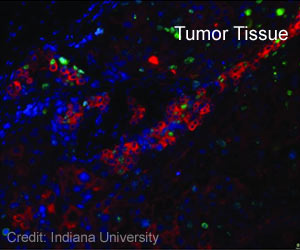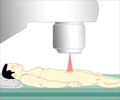The new imaging technique will help in detecting, monitoring and guiding treatment for prostate cancer.

- New imaging technique tracks the antibody activity in real time and provides information on its efficacy.
- This technique promises in increasing the accuracy of treatment in hormone-sensitive cancers like prostate and breast cancer.
"The findings show that individually tailored imaging agents can provide a unique way of looking at disease progression in real time and in a noninvasive manner," says Daniel Thorek, Ph.D., assistant professor of radiology and radiological science at the Johns Hopkins University School of Medicine, and the paper’s first author.
"Perhaps someday we can put a personalized antibody such as the one we created in our study on a therapeutic agent and conduct cancer treatment using imaging with very high specificity."he added.
A summary of the findings was published in Science Translational Medicine.
"We managed to very accurately and precisely monitor the mouse prostate, and that leads us to hope that a similar approach can be used to guide treatment in people," he said.
Presence of elevated PSA indicates that the androgen receptor pathway is active and may indicate prostate cancer is present.
When PSA combines with the antibody, it forms the antibody-PSA which is “washed-out” and does not remain near the disease site. This makes it difficult to identify and measure disease sites.
Developing New Antibody
Researchers developed a new antibody called 11B6 to target the antigen, human kallikrein-related peptidase 2 (hK2). This antigen also indicates the androgen receptor pathway activation.
But hK2 is specifically active only in the prostate and an aggressive type of breast cancer, unlike PSA and is not influenced by other factors.
When the new antibody binds to the antigen the newly formed 11B6-hK2 complex is not ‘washed-out’ and is taken directly back into the cancerous cell.
As far as the research team is aware, this is the first study to exploit the biological mechanism for imaging purposes, Thorek says.
"Lighting up” the Complex
The research team then made 11B6 "light up" during PET and fluorescence imaging by binding it to zirconium-89, creating a traceable radiochemical compound called 89Zr-11B6.
By imaging the new compound, 89Zr-11B6 using PET, the team showed that binding 11B6 to hK2 can measure activity of cancerous lesions robustly, in both soft tissue and bone.
Prostate and breast cancer often metastasize to bone, therefore detection of lesions in all areas of the body is critical.
To avoid negative side effects of antibody and to maintain efficacy, tracking the antibody localization to disease sites using imaging technique in real time will be useful.
To find out if a particular drug is beneficial to a patient, imaging of the antibody uptake before and after treatment could help.
If a response is seen, the imaging agent could be used to choose the right dose, balancing the therapeutic effect and minimizing adverse effects.
If there is no changing in imaging it is advisable to discontinue ineffective treatments, saving time and cost.
The team is currently engaged with preliminary non-human primate toxicity tests, as a final step before conducting human clinical trials.
Source-Medindia















